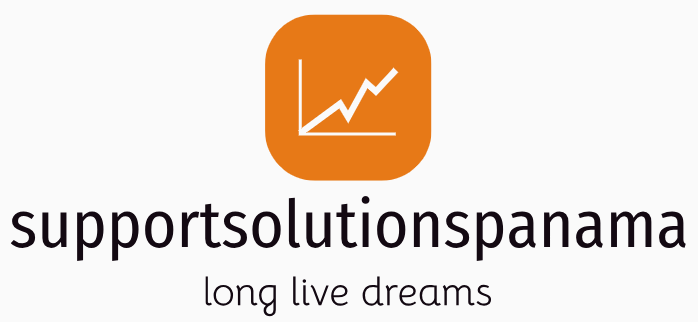Data Breaches How to Shield Yourself from Identity Theft

Understanding the Threat of Data Breaches
Data breaches are unfortunately a common occurrence in today’s digital world. Companies, both big and small, are constantly targeted by hackers looking to steal sensitive information. This data can include everything from your name and address to your Social Security number, credit card details, and even your medical records. The consequences of a data breach can be severe, leading to identity theft, financial loss, and significant emotional distress. Understanding the risks involved is the first step towards protecting yourself.
Monitoring Your Accounts for Suspicious Activity
Regularly checking your bank and credit card statements is crucial. Look for any unauthorized transactions, no matter how small. Also, monitor your credit reports from all three major credit bureaus (Equifax, Experian, and TransUnion) for any new accounts or inquiries you didn’t authorize. Many banks and credit card companies offer online account alerts that will notify you of suspicious activity in real-time, significantly improving your response time.
The Importance of Strong Passwords and Multi-Factor Authentication
Weak passwords are an open invitation for hackers. Create strong, unique passwords for each of your online accounts. A strong password is long, complex, and includes a mix of uppercase and lowercase letters, numbers, and symbols. Consider using a password manager to help you generate and securely store these passwords. Further enhance your security by enabling multi-factor authentication (MFA) whenever possible. MFA adds an extra layer of security by requiring a second form of verification, such as a code sent to your phone or email, before allowing access to your account.
Being Cautious of Phishing and Smishing Scams
Phishing and smishing scams are common tactics used by hackers to trick you into revealing your personal information. Phishing involves fraudulent emails or websites that look legitimate, while smishing uses text messages. Be wary of unsolicited emails or texts asking for your personal information, login credentials, or financial details. Never click on links or open attachments from unknown senders. If you’re unsure about the authenticity of a message, contact the company directly using a phone number or email address you know to be legitimate.
Securing Your Home Network and Devices
Your home network can be a vulnerable point of entry for hackers. Make sure your router is password-protected and that you regularly update the firmware. Install antivirus and anti-malware software on all your devices and keep it updated. Use strong passwords for your Wi-Fi network and avoid using public Wi-Fi for sensitive transactions. Regularly scan your devices for malware and keep your operating systems and applications updated with security patches.
The Role of Credit Freezes and Fraud Alerts
Consider placing a security freeze on your credit reports. A credit freeze prevents new accounts from being opened in your name without your explicit permission. You can lift the freeze temporarily when you need to apply for credit. Alternatively, you can place a fraud alert on your credit reports. This will alert creditors to verify your identity before opening new accounts. Both credit freezes and fraud alerts are valuable tools in preventing identity theft.
Regularly Reviewing Your Privacy Settings
Many websites and apps collect your personal data. Regularly review your privacy settings on social media platforms, online shopping sites, and other online services. Limit the amount of personal information you share online and be mindful of the permissions you grant to apps. Understand what data is being collected and how it’s being used. Opt out of data sharing whenever possible.
Educating Yourself and Your Family
Staying informed about the latest threats and security best practices is essential. Read up on cybersecurity news and follow reputable sources for advice. Educate your family members, especially children and elderly relatives, about the risks of identity theft and how to protect themselves online. Regular family discussions about online safety can significantly reduce your vulnerability.
Reporting Suspected Identity Theft
If you suspect you’ve been a victim of identity theft, act quickly. Report the theft to the appropriate authorities, including the Federal Trade Commission (FTC), your bank or credit card company, and the credit bureaus. File a police report and obtain a copy of the report. Follow the steps outlined by the FTC to help resolve the issue and protect your identity. Remember to document every step you take in the process.
Staying Vigilant and Proactive
Protecting yourself from identity theft requires ongoing vigilance and a proactive approach. It’s not a one-time fix but rather a continuous process of monitoring, updating, and adapting to evolving threats. By staying informed and following these tips, you can significantly reduce your risk and safeguard your personal information in the digital age. Read more about Personal data security.




![Discover the Future of [Product Category] Discover the Future of [Product Category]](https://images.unsplash.com/photo-1700104494865-200e961d942c?fm=jpg&q=60&w=3000&ixlib=rb-4.1.0&ixid=M3wxMjA3fDB8MHxzZWFyY2h8OXx8cHJvZHVjdCUyMGxhdW5jaCUyMG1hcmtldGluZyUyMGNhbXBhaWdufGVufDB8MHwwfHx8Mg%3D%3D)





